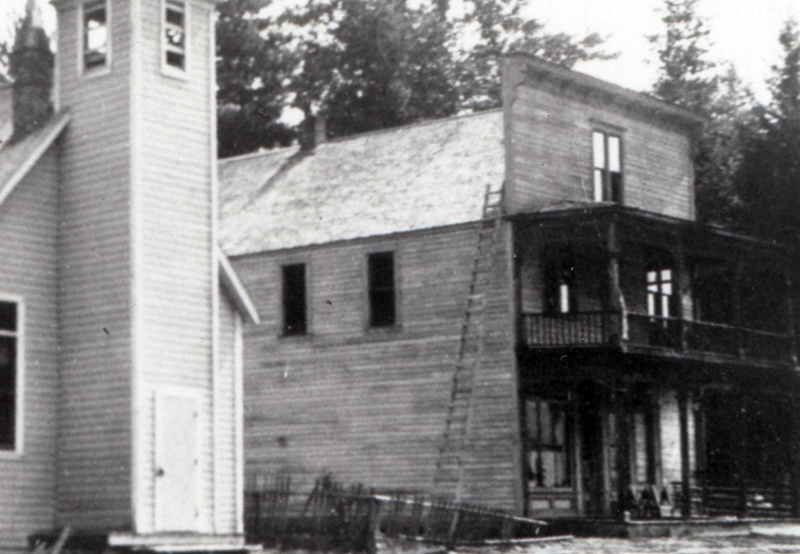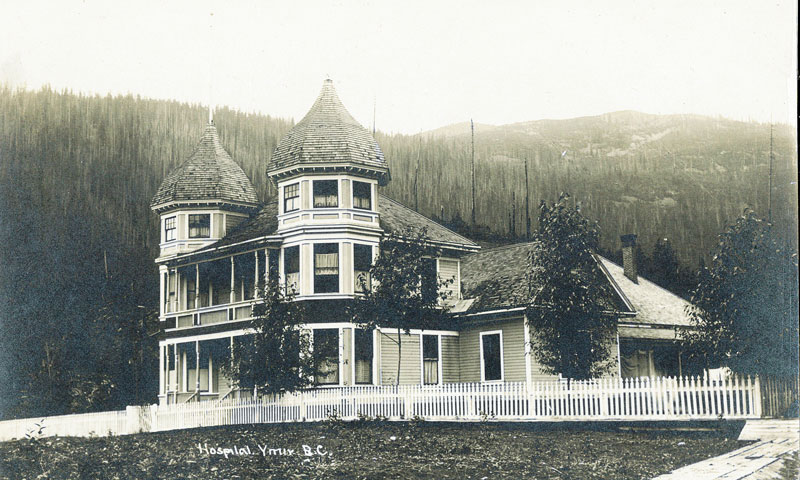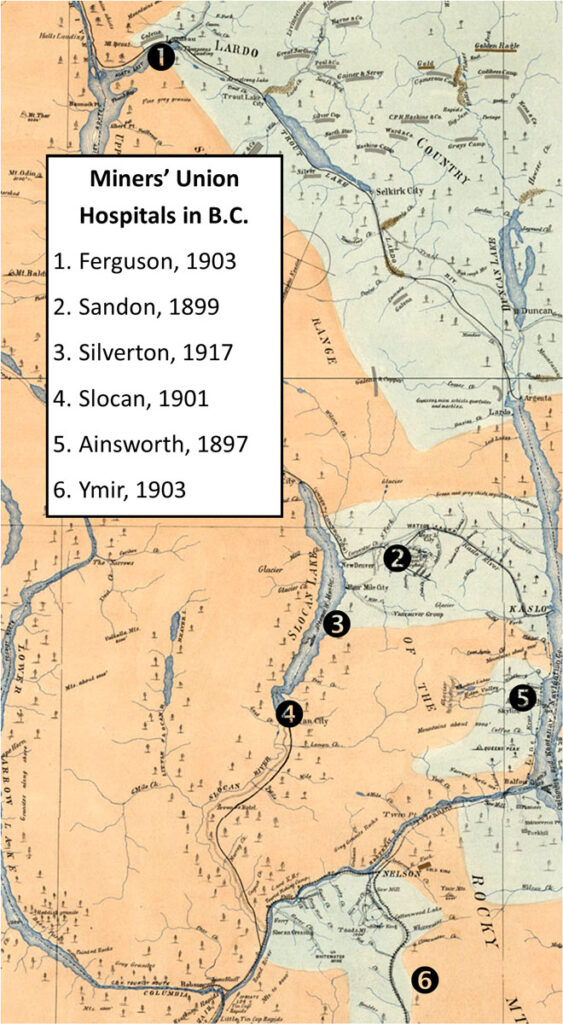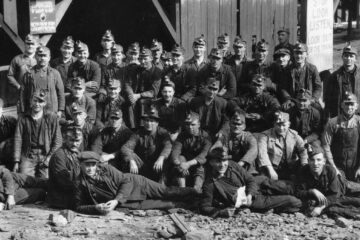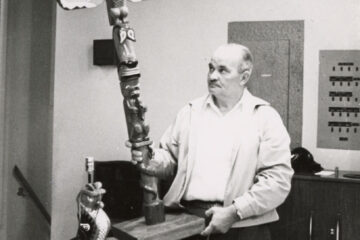Miners’ Union Hospitals in B.C.
Researched and written by Donna Sacuta
Additional research by Greg Nesteroff
Hospitals run co-operatively “for use rather than profit”
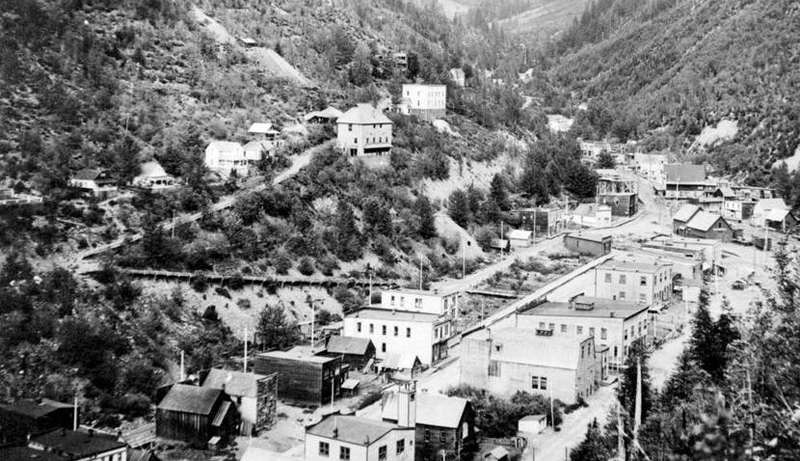
The third Miners’ Union Hospital in Sandon, B.C. (1918) is the square building on the hill at top centre. The first hospital burned down in 1900 and the second was abandoned in 1904. BC Archives photo, D-00151.
Miners’ Union Hospitals were a radical response to the critical need for inclusive health care in B.C.’s mining communities more than 100 years ago. At least six local unions of the Western Federation of Miners established their own hospitals in the Kootenay region before 1900, an early acknowledgement of health care as a universal right, and unions as agents of social change. The hospitals served not only miners, but the entire community.
In B.C.’s early years, hospitals outside of urban centres were rare. Underground mining was a notoriously deadly industry, and for workers and their families in rural areas or small towns, major illness or injury meant long and dangerous transport elsewhere.
“The miner’s life in the 1890s was a hard one. Working in cold, damp tunnels hundreds of feet underground, many were killed in the mines, or in avalanches traveling to or from work, or died lingering deaths from respiratory diseases brought on by work in the mines”. 1
In the United States several small unions formed the Western Federation of Miners (WFM) in 1893. One of these unions had already set up its own hospital in Couer d’Alene, Idaho in 1891.
The most radical union of its era, the WFM held a revolutionary view of social and economic conditions and supported socialist causes. “They not only want socialism, but they want it this morning.”2
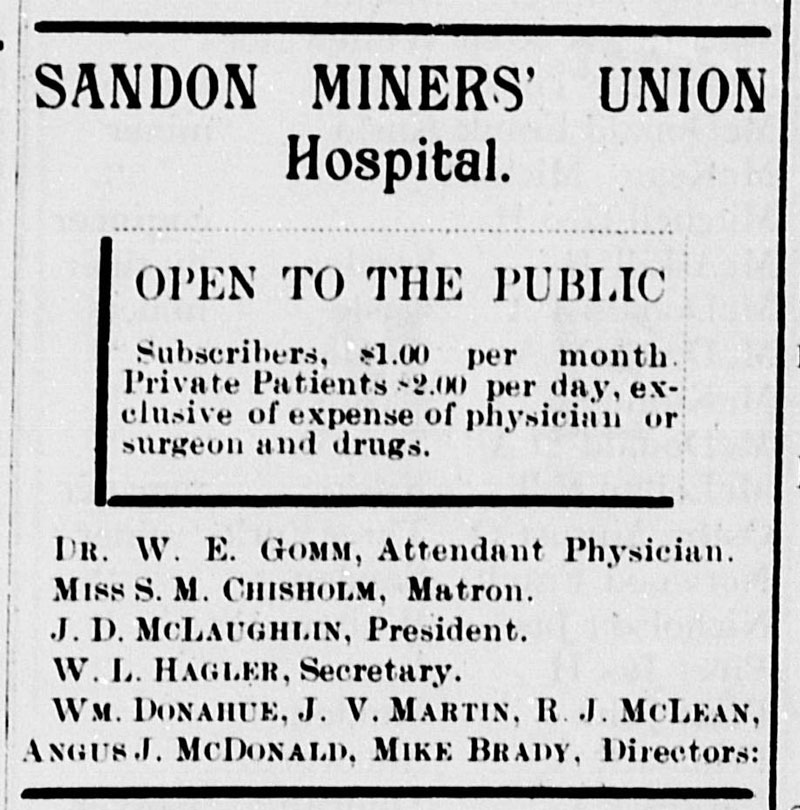
Union executives made up the hospital board and had complete control of operations. The Paystreak, 10 April 1900.
In Canada, at least six Miners’ Union Hospitals were located in B.C.’s Kootenay region. The hospitals were funded by the miners through an early form of payroll deduction, typically $1.00 per month. The public were able to subscribe at a higher rate. Funding of the hospitals was often a crucial concern, especially when strikes impacted revenues.
Hospital boards were the union executive members, sometimes with one or two community representatives. The board had complete jurisdiction over purchasing property, construction, raising funds, hiring nurses and finding doctors that were agreeable to the miners. The hospitals operated under the “principle of operation for use rather than profit”. 3
The first Miners’ Union Hospital in B.C. may have been in 1897 at Ainsworth, though little is known about its history.
On March 1, 1899 the new Sandon Miners Union Hospital was “equipped to treat six patients…rich and poor alike.” 4.
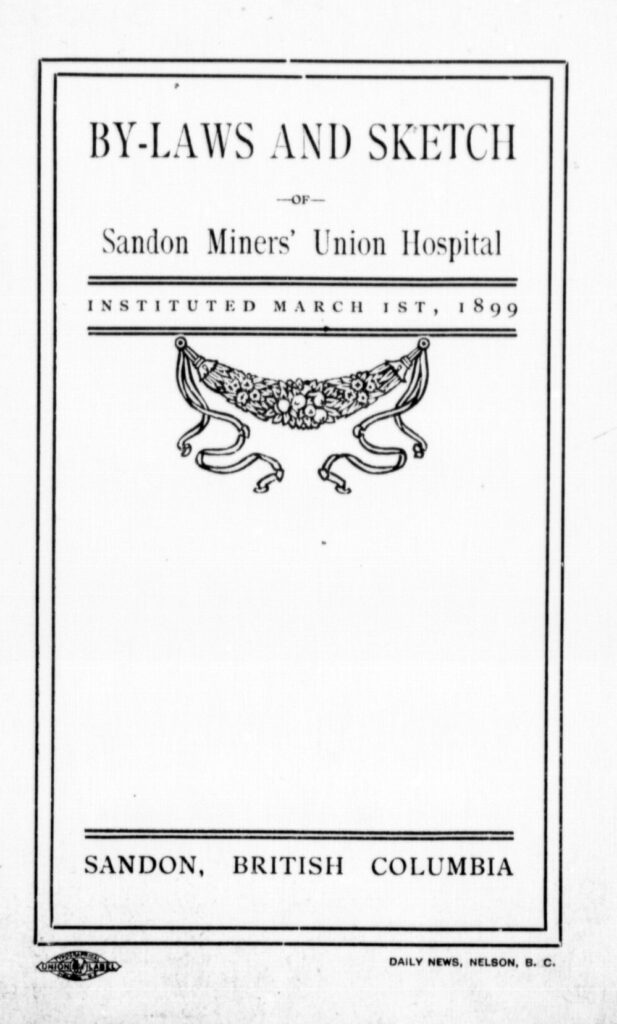
The by-laws of the Sandon Miners’ Union Hospital “to provide an argument in favor of co-operative ownership.”
“The principle of operation for use rather than profit is, and has ever been one of the fundamental theories on which the structure of progressive Unionism has been reared and here was an opportunity of putting into practice the ideals we sought to inculcate.” 5
By 1901 Slocan Local 62 had purchased a existing building and transformed it into a hospital with four beds, a surgery, doctor’s office and two maternity wards.
“The institution is in capable hands, is conducted on a satisfactory basis, and is proving a great benefit to the town and camp,” gushed the Slocan Drill on June 7 1901. The newspaper noted that three of the hospital’s four beds were in use. One was occupied by a miner injured by a cave-in at a mine, another who had fallen through an excavation and the third who suffered from rheumatism.
At Ymir, WFM Local 85 opened a 15-bed hospital in 1903, in an impressively designed three-storey building with twin turrets and balconies. When a local newspaper questioned how hospital finances were being managed, the union and its supporters boycotted the newspaper to the point of its demise.6
The Lardeau Miners’ Union, WFM Local 119, established a hospital at Ferguson in 1903. “It was decided to give the miners complete jurisdiction over the hospital after its completion, with the understanding of course that it be available to everyone.”7

Ferguson Miners’ Union, WFM Local 119, April 1901, two years prior to opening their hospital. Note the presence of an infant. Miners’ Union Hospitals provided maternity care. Vancouver Public Library, 100.
In 1917, the Silverton Miners’ Union also opened a hospital, though the provincial deputy Minister of Labour had to be called in to mediate a dispute over whether the miners’ monthly dues were intended to support the New Denver or the Silverton hospital. 8
The United Mine Workers also opened hospitals in Canada and the United States, after seeking advice from the Sandon Miners’ Union on how to proceed. The UMW hospitals were in the southeastern coal mining communities around Alberta’s Crowsnest Pass. The only known UMW hospital in B.C. was at Hosmer, where the union assumed ownership of an existing company hospital. 9
Some of the hospitals lasted into the 1930s when the economic depression hit, some burned down and were re-built. At least two (Sandon and Slocan) were used for Japanese incarceration during the Second World War.
- “The Western Federation of Miners and the One Big Union,” Sandon Historical Society, https://www.sandonmuseum.com/post/the-western-federation-of-miners-and-the-one-big-union[↩]
- Clements, Eric L. “Pragmatic Revolutionaries?: Tactics, Ideologies, and the Western Federation of Miners in the Progressive Era.” Western Historical Quarterly, vol. 40, no. 4, 2009, 449.[↩]
- By-laws and sketch of Sandon Miners’ Union Hospital, https://www.canadiana.ca/view/oocihm.78481[↩]
- Veronika Pellowsi, Silver, Lead and Hell: The Story of Sandon, Prospectors’ Pick Publishing, 66[↩]
- Bylaws, 5.[↩]
- Greg Nesteroff, “Questioning hospital’s finances killed Ymir newspaper”, Nelson Star, 22 February 2016.[↩]
- “Hospital is Assured”, Lardeau Eagle, 6 Mar 1902, 1.[↩]
- M. Scaia and H. von Krogh, “The Silverton Hospital and the Silverton-New Denver Hospital Dispute”, The Silver Standard, Silvery Slocan Historical Society, Winter 2022.[↩]
- Alan Derickson. “From Company Doctors to Union Hospitals: The First Democratic Health-care Experiements of the United Mine Workers of America.” 1992.[↩]
